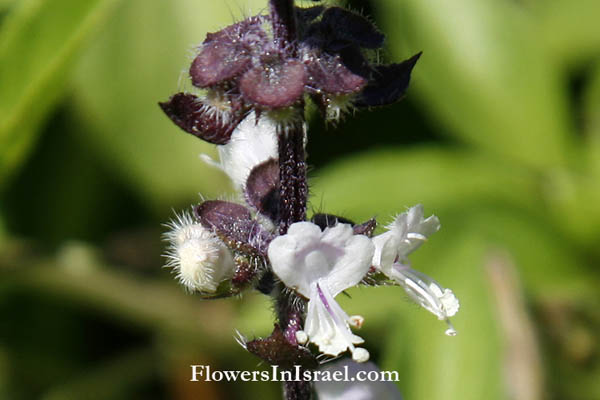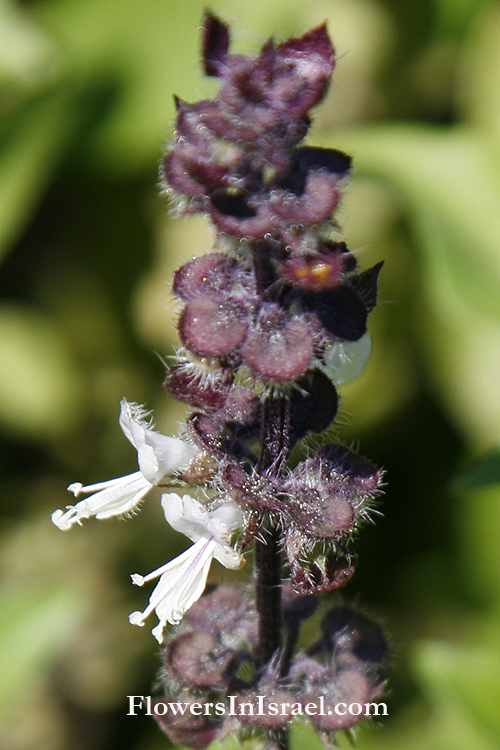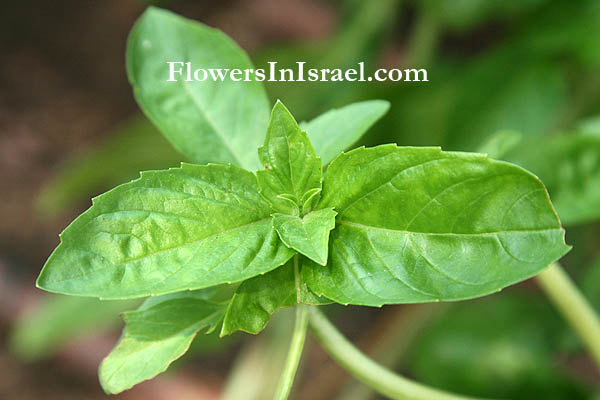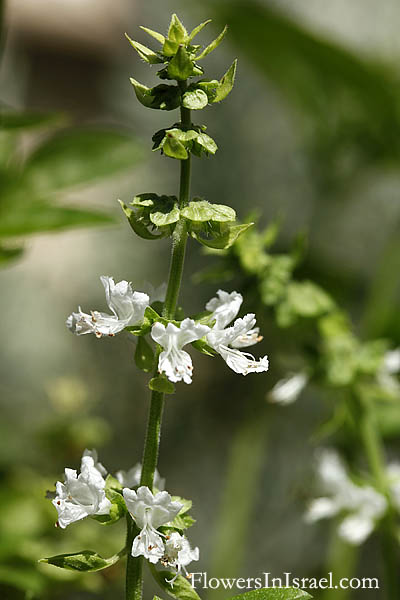Sacred basil, בזיליקום, ריחן, الريحان
| Scientific name: | Ocimum basilicum L. | |
| Common name: | Sweet basil, Holy basil, Sacred basil | |
| Hebrew name: | (rehan) בזיליקום, ריחן | |
| Arabic name: | al-raihan, الريحان | |
| Family: | Labiatae / Lamiaceae, Mint Family, שפתניים |

|
| Life form: | Annual | |
| Stems: | Up to 75cm tall, 4-angled, glabrous or sparsely hairy, branching, herbaceous, strongly aromatic | |
| Leaves: | Opposite, simple, ovate to oblong-ovate, entire or slightly toothed margin | |
| Inflorescence: | Whorld flowers in a terminal spike | |
| Flowers: | Hermaphrodite; bilabiate (two-lipped) (Botany), small white | |
| Fruits / pods: | Nutlets, smooth or somewhat rugose | |
| Flowering Period: | August, September | |
| Habitat: | warm and moist | |
| Distribution: | cultivated | |
| Chorotype: | native to India |

Derivation of the botanical name: Ocimum, Greek okimon used by Theophrastus (370 — ca. 285 BCE), and Dioscorides (ca. 40 - ca. 90) and Galenus (129 – 199/217 CE) for an aromatic herb, basil. Latin ocimum (Plinius) for a herb which serves for fodder. basilicum, basileus Greek βασιλεύς, royal or king, because of the royal fragrance of this herb; related word basilica Basiliké Stoà, Royal Stoa, the tribunal of a king. Names like German Königskraut and Dutch koningskruid “king’s herb” are probably calqued from the Greek name.
BIBLICAL REFERENCES:


|